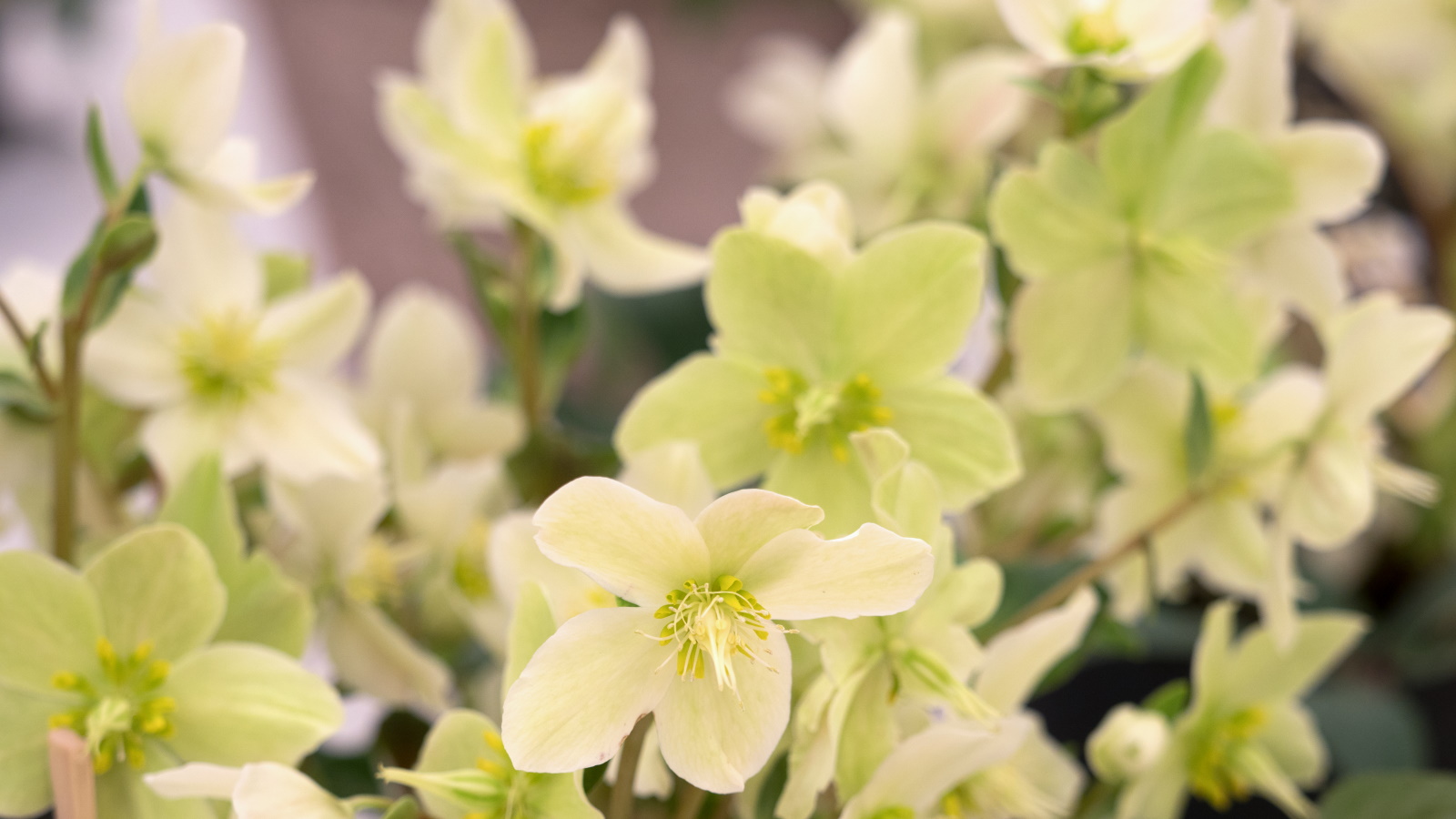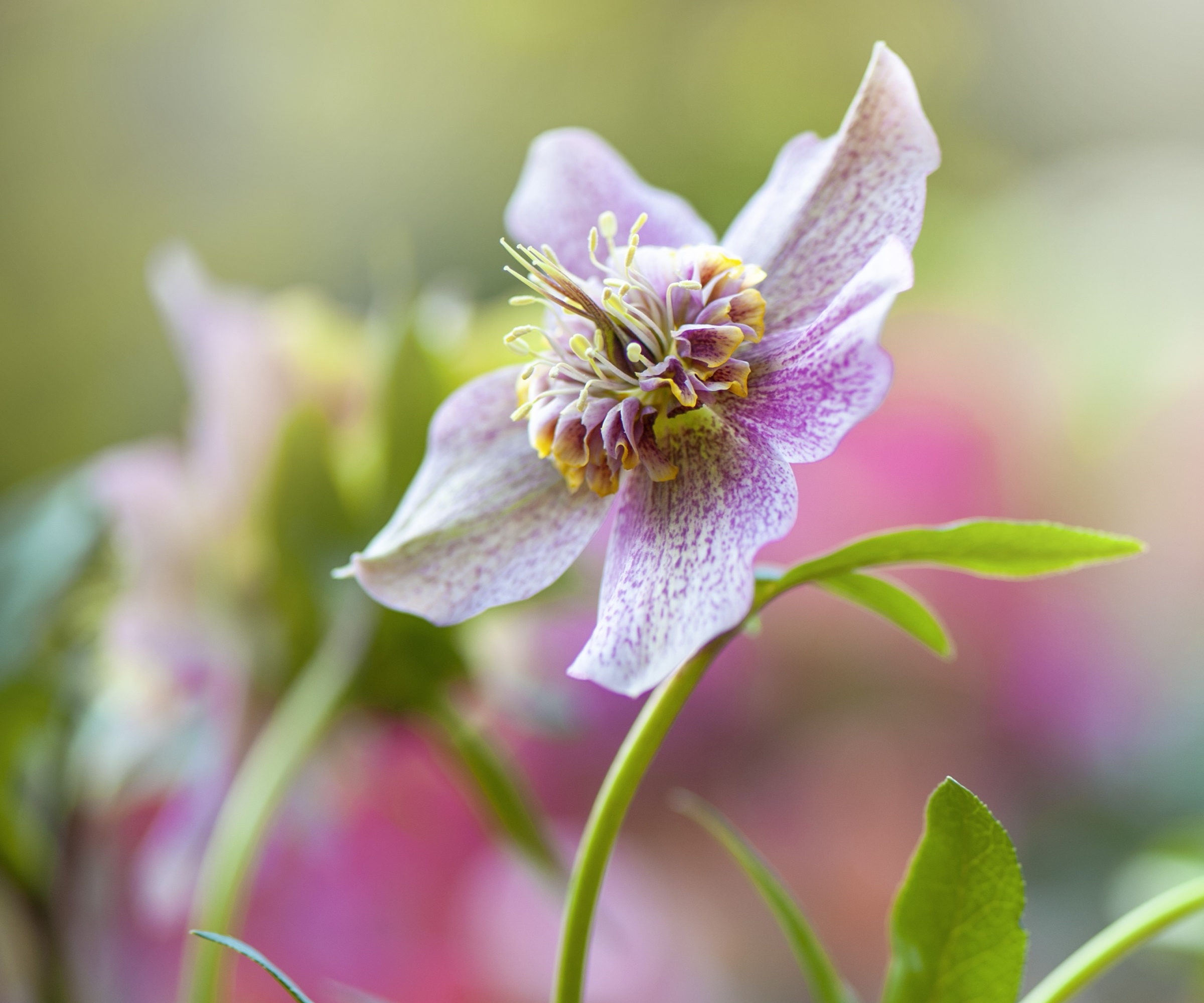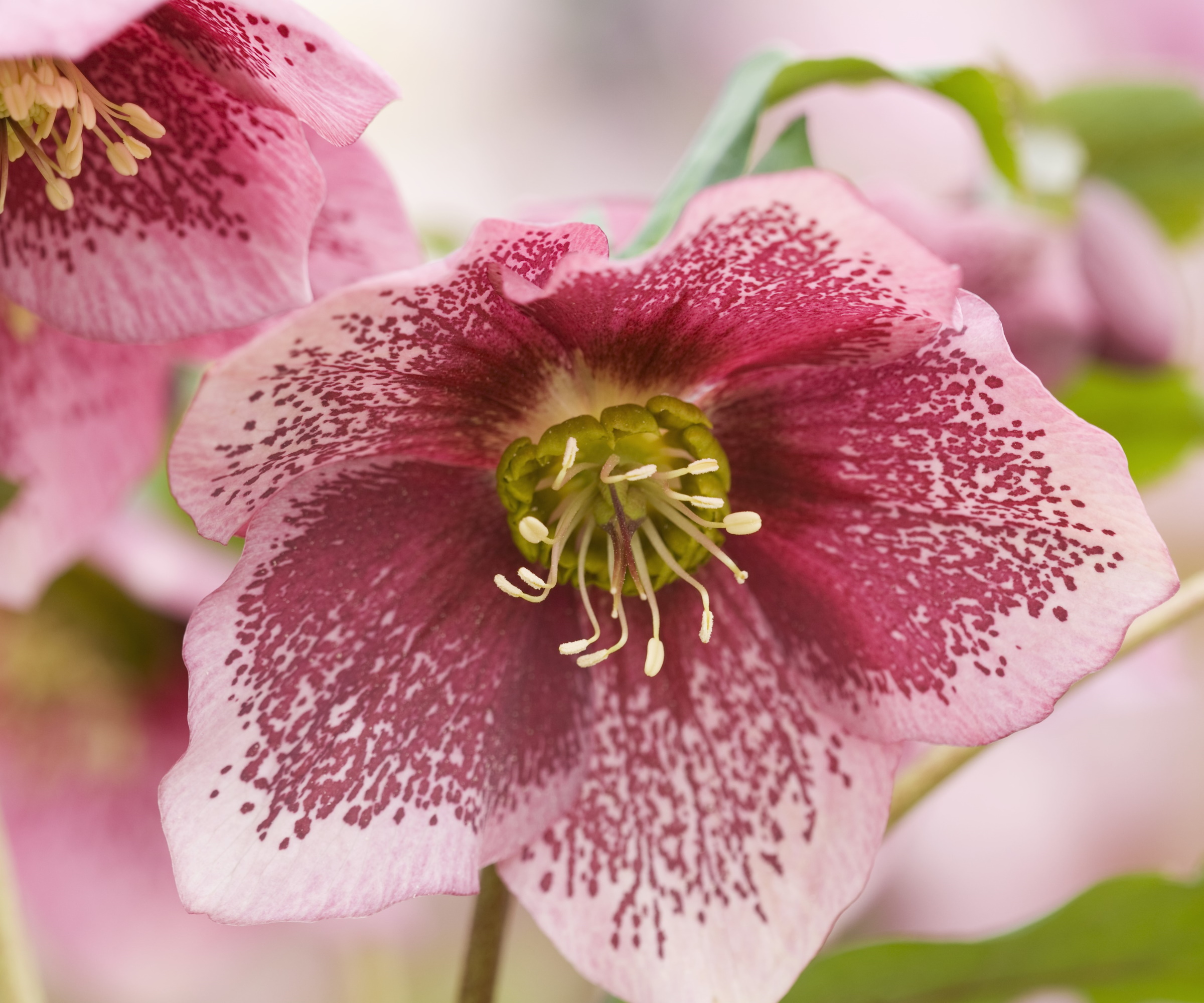How to grow hellebores in containers – planting ideas for winter displays
During the cold and dark months of the year, a floral container display can brighten up any outdoor space


Hellebores, with elegant, often downward-facing blooms, add something special to the winter flower garden. If you're considering garden ideas and looking for something both tough and floriferous, this versatile and resilient perennial is the perfect plant pick.
There are a substantial number of hellebore varieties available in a range of colors, including whites, pinks, purples and greens. Often, hellebore flowers will show distinct markings and patterns, helping to create a winter display full of unique blooms.
Growing hellebores needn't be complicated, and they are generally a low-maintenance and fuss-free perennial to include in your planting schemes, whether in the backyard or near the front porch. The good news for container gardening enthusiasts is that hellebores will grow just fine in pots and containers.
Hellebores grown in containers are well-suited for patios, balconies, terraces or small yards, taking up minimal space but producing a good number of flowering stems per plant. Flowers will often appear in late winter, sometimes early spring depending on your location, and always provide a welcome burst of floral color.
To enjoy hellebores up close, consider planting them in containers strategically placed near entrances or visible from windows, ensuring that you get the most from your winter flowering plants.

How to grow hellebores in containers
Hellebores are an easy-to-grow and hardy perennial that will grow well in pots and containers, helping to maximize the winter flowers in your yard at this time of year.
Things to consider when growing hellebores

Hellebores are hardy perennials, meaning they can withstand colder conditions and cool temperatures through the winter months. They can grow mostly anywhere in US hardiness zones 3 - 9.
Design expertise in your inbox – from inspiring decorating ideas and beautiful celebrity homes to practical gardening advice and shopping round-ups.
'Hellebores are winter-blooming,' says Carolyn Walker, plant expert and owner of Carolyn's Shade Garden nursery, 'so growing them outside in below-freezing weather' is not a problem.
'One of the main considerations for growing plants in pots in winter,' continues Carolyn, 'is whether the plant can tolerate its roots freezing, something that would not happen if it were in the ground. Fortunately, my experience is that hellebores do just fine.'
'Every two years, it is best to knock them out of the pot, shake the compacted soil off their roots, and replace all the soil with fresh potting soil,' Carolyn says. 'If the hellebores are struggling,' Carolyn continues, 'then plant them in the ground at this stage'.
There are many hellebore varieties to pick from, all with stunning winter blooms, such as this Hellebore orientalis from Garden Goods Direct, or this Helleborus x 'French Kiss' also from Garden Goods Direct.

Carolyn is a plant expert and owner of Carolyn’s Shade Gardens, a retail nursery in Bryn Mawr, Pennsylvania. Carolyn grows and gardens in zone 6b/7a and is a shady plant expert.
How to grow hellebores in containers

'Hellebores can be grown short-term for a couple of years in containers,' says Doug Ruhren, garden expert and curator at Juniper Level Botanic Garden near Raleigh, North Carolina. 'In choosing a container you want to make sure to choose a large enough one to allow for adequate root growth,' Doug says. Squeezing a plant into a too-small pot is never recommended.
When considering where to grow your hellebores, it is best to place the container near your home in a bright location, preferably near a doorway or window. You want to be able to enjoy your wintery blooms as much as possible, giving the hellebore as much winter sun as it might like.
'Your container should have good drainage,' Doug says, and it is best to 'use a potting medium that is well-draining so the plants don't stay too wet.' If in doubt, add grit or perlite to your potting mix. You can also add in a handful of organic mulch that will also help to give your hellebore the best start.
Doug recommends 'using a general organic fertilizer and applying it in late winter to early spring to feed the microbes in the soil.' Many products are available, but something like this Organic Fertilizer from Walmart is recommended. 'A good layer of mulch is also beneficial,' Doug says, helping to add nutrients and drainage to the container. Regularly check on your containers, using your fingers to assess the soil. If dry, be sure to water your container even during the winter months.
The 'flowers of hellebores are long-lasting,' Doug says, 'and can remain attractive into late spring.' As the flowers age, they will slowly fade. Whilst many gardeners, myself included, enjoy the fading of flowers, still beautiful even as they begin to decay, you can 'cut the flowering stalk at ground level,' Doug says, whenever you are ready.
At this stage, you can either move your containers to a different part of the backyard, as the flowers fade and the foliage begins to dominate, or you can plant the hellebores out into the ground. If you are looking to grow your collection, you can propagate hellebores in the fall, by dividing healthy clumps, giving you even more winter flowers in the coming years.

Doug is Garden Curator at Juniper Level Botanic Garden near Raleigh, North Carolina. After completing his studies at Rutgers, Doug worked at Chatwood Estate, Montrose Gardens, Daniel Stowe Botanical Garden, and The American Camellia Society headquarters. Doug is responsible for most of the plant collections and planting decisions, advising garden maintenance staff, and heading up many of our educational efforts.
FAQs
Can all hellebore varieties be grown in containers?
Most, if not all, hellebores can be grown in containers, but this will be specific to each hellebore species and variety, with a preference for different conditions. Most enjoy some winter sunlight for at least part of the day, with a preference for dappled shade. Your hellebores can remain in a container for a year or two, at which point it is recommended that you plant them out in the wider garden or yard.
Adding hellebores to a container will certainly brighten up your yard this winter. An additional idea is to plant them in a winter window box, which is a great way to add even more flowering blooms to your home.

Thomas is a Content Editor within the Gardens Team at Homes and Gardens. He has worked as a professional gardener for both public spaces and private estates, specializing in productive gardening, growing food and flowers. Trained in Horticulture at the Garden Museum, he has written on gardening and garden history for various publications, including The English Garden, Gardens Illustrated, Hortus, The London Gardener and Bloom. He has co-authored a Lonely Planet travel book, The Tree Atlas, due out in 2024.